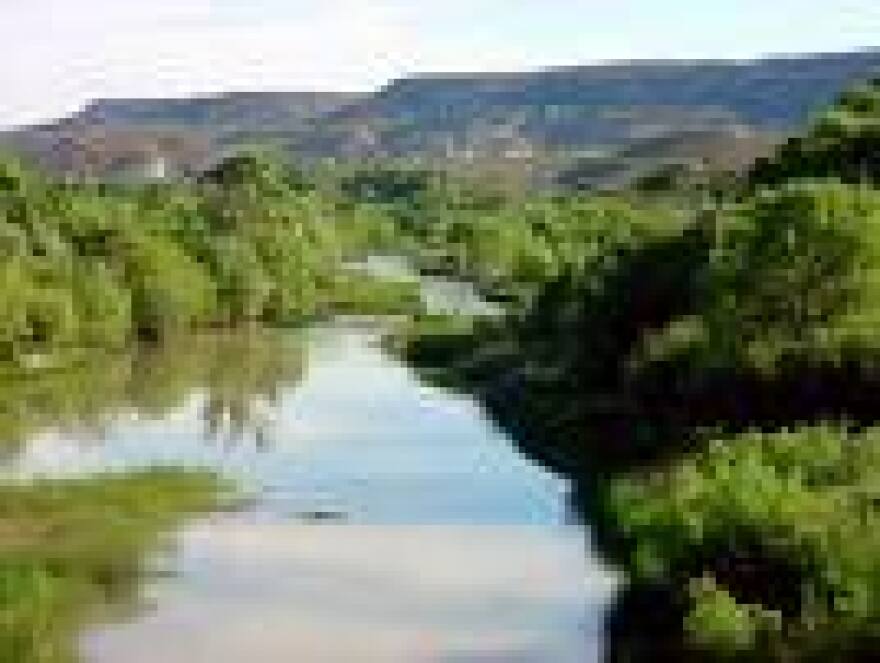By Laurel Morales
http://stream.publicbroadcasting.net/production/mp3/knau/local-knau-896813.mp3
Flagstaff, AZ – Arizona has a long history of battles over water. The latest seems to have reached a truce at least for now. For years Prescott and Prescott Valley have been fighting a Phoenix utility over water rights to the Big Chino aquifer. Right now they've halted litigation long enough to negotiate an agreement. Part of the deal hinges on legislation under consideration by state lawmakers this week. And that's just the beginning as Arizona Public Radio's Laurel Morales reports.
The settlement will allow Prescott and Prescott Valley to draw about 8-thousand acre feet of water a year from the Big Chino Aquifer to quench the thirst of their booming populations. They've nearly tapped out their local ground water supply. In return the towns have to ensure their wells won't siphon water away from the Verde River, an important source of drinking water for Phoenix and the only Arizona river to flow freely year-round.
Federal studies have shown the Big Chino Aquifer supplies at least 80 percent of the flow for the upper Verde River.
The Salt River Project - or SRP -- delivers a million acre feet of water each year to Phoenix metro customers and nearby farmers. One acre foot is the amount of water a typical American family uses in a year. Spokesman Jeff Lane says about 40 percent of their water comes from the Verde River.
LANE: Our concern has always been about protecting the flow of the Verde River, which we believe would be negatively impacted by large volume pumping of the Big Chino aquifer. We can't afford to leave sustainability to chance on this.
So the deal that SRP has worked out calls for Prescott and Prescott Valley to monitor the impacts of their pumping.
Prescott Valley's water resource manager John Munderloh says extensive pumping at the Big Chino Water Ranch over several decades hasn't lowered ground water levels. So he's confident they can pump without creating any environmental impacts.
MUNDERLOH: To back that up we've agreed to this agreement and principle with Salt River Project that provides for us mitigating any impacts that we might have. So aside from all the money we've put into the project to guarantee that we won't have impacts, we've also taken out an insurance policy in case we do.
If they do notice ground water levels dropping, they must have a plan in place to replenish it.
Some environmentalists, who are concerned about the rich biodiversity the Verde supports, have approved of this agreement, but not all of them.
The Center for Biological Diversity's Robin Silver calls any monitoring efforts a smokescreen.
SILVER: Monitoring becomes farcical because in order to monitoring the situation you put wells in and you basically watch what's happening with the ground water flow. By the time you start seeing a change in the monitor wells it's too late to protect areas downstream.
And he says mitigation has also been very controversial.
SILVER: Because quite frankly we don't know what kind of mitigation can be put forth that will replace the water that's taken away from the Upper Verde.
Northern Arizona University hydro geologist Abe Springer suggests adopting Chino Valley's mitigation plan. They've promised to recharge the Verde with treated effluent to replace what they pump out of the Big Chino.
Springer has been a consultant on a U-S Geological Survey model of the aquifer and the Verde River. The study isn't complete yet but so far Springer can glean
SPRINGER: Pumping in areas adjacent to the head waters will have an influence to the head waters. There's been discussion on as you get more distant from the head waters the timing of when impacts will happen and the magnitude of what the impacts will be.
The Big Chino Water Ranch, where the towns plan to dig wells, is about 20 miles from the Verde River headwaters. But in addition to Prescott and Prescott Valley, Chino Valley and Paulden also have water rights to the aquifer. And Paulden residents have dug wells much closer to the headwaters. So Springer says it's important to look at the cumulative impacts of all the water users.
SPRINGER: If you take more water out than goes in you're going to decrease the amount of water in storage and diminish the amount of water that can naturally flow out.
Another challenge Prescott faces is the Taxpayer Protection Initiative. Last November voters approved a measure that gives them final say on projects of $40 million or more. And the 30 mile long pipeline has been estimated to cost more than a $100 million. So it will ultimately be up to Prescott voters to decide whether this project moves forward.
For Arizona Public Radio I'm Laurel Morales.


